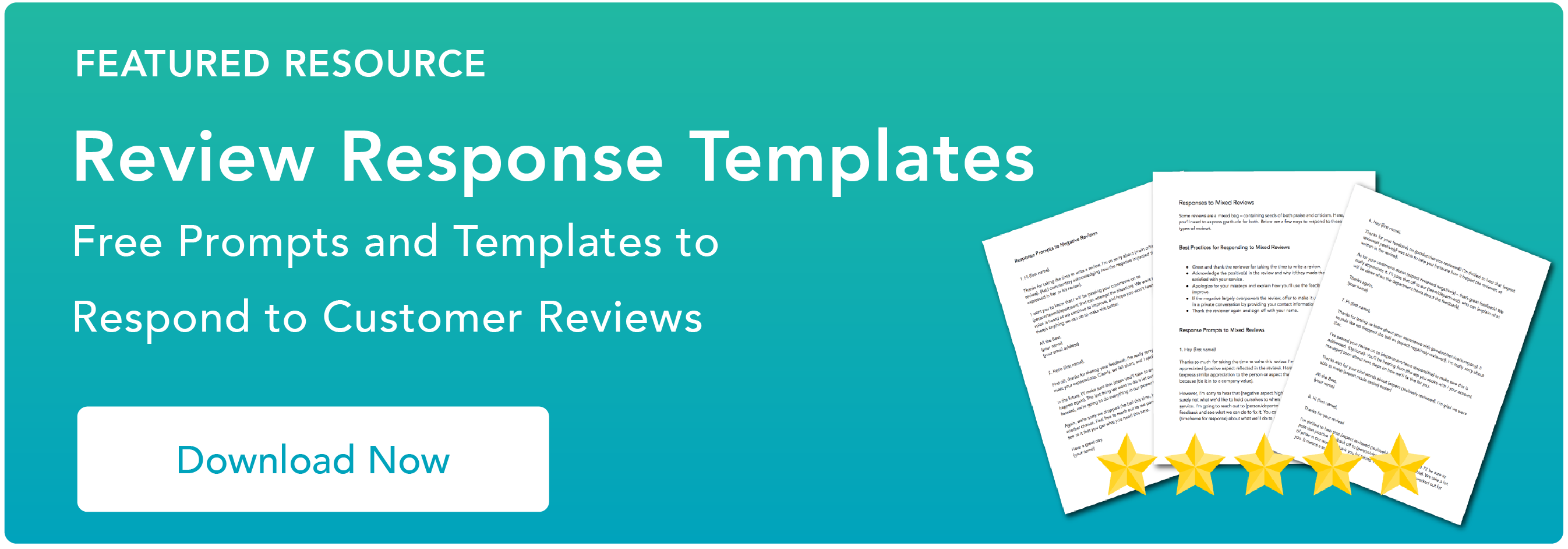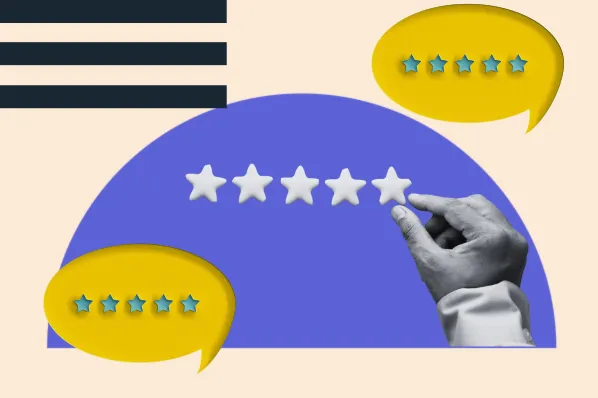Our goals can ultimately be summarized as trying to find the answers to five questions: Who, what, where, when, and why?
- Who are we requesting reviews from? (Customers? Users? What segments of these groups?)
- What specific requests are we making of our customers/users? (What sites are we asking them to leave reviews on? What other advocacy actions are we asking them to take?)
- Where are we requesting these reviews? (In-app? In an email? In our iOS/Android app? In a third-party platform or integration?)
- When are we making these requests? (After certain actions in the product? After a certain time period of product usage? At certain HubSpot or industry events?)
- Why are our customers or users incentivized or persuaded to leave a review? (What rewards or psychological principles are we using to encourage our customers to leave reviews?)
We ran several different experiments over the course of 2018 centered on engaging HubSpot users and customers via email with different incentive and engagement offers to prompt them to leave positive customer reviews for us on third-party customer review sites.
Ultimately, our campaigns earned HubSpot more than 1,000 new in-depth reviews, and we learned a lot along the way that we wanted to share for your own customer review campaigns. Read on for our key findings and recommended best practices for asking your customers and users for a review.
10 Best Practices for Effective Customer Review Campaigns
1. The fewer steps a user has to go through to leave a review, the higher the submission rate will be. Even just adding one step (an additional CTA click) can dramatically reduce submission rates.
This isn't too surprising - having to wait for extra pages to load, struggling to find additional CTAs, or requiring someone to read more text will all contribute to decreased conversion rates.
2. People prefer to open an email with a subject line that's a pat on the back ("Congratulations!") over a subject line that indicates a possible incentive ("Get rewarded!").
Offering an incentive within the subject line comes with the presumption that some amount of work is required, but everyone likes being told they are doing a good job (which these customers are!).
3. Readers who are immediately offered a lottery incentive are significantly more likely to follow through with the review completion process than those immediately offered a direct incentive.
Perhaps, this segment of 'clickers' is more motivated to leave a review at this point as they have already gotten it in their head that they have a chance to win a large reward (rather than lose out on a small incentive).
4. People like to help others and are more willing to put in the effort to help their peers than to help us.
Customers are more likely to submit a review if the motivation for doing so is to help their peers make their software buying decisions as opposed to helping us improve our online reputation.
5. Having recently sent a marketing email is a more successful motivator for leaving a review than having recently activated a workflow.
Perhaps, the immediate gratification of sending a marketing email to hundreds or thousands of people is a more delightful moment than simply activating a workflow, which may take days or months to run its course.
6. People like more money (duh).
Not too unsurprisingly, people are more likely to leave a review if they are offered a larger incentive. What is a bit surprising, however, is that although the incentive was only 2.5x as large as previous experiments, the submission rate for reviews was 3.37x higher. It begs the question - at what point of increasing the value of the incentive will we stop seeing an increase in submission rate?
7. Positioning multiple advocacy requests in an email doesn't negatively impact review submission rate.
Asking customers to submit reviews while also giving them the option to join our advocacy community (HubStars) does not decrease the review submission rate. In fact, the inclusion of these customers in our advocacy community actually means we generate more reviews out of them long -term. A spike was seen in our reviews on G2 Crowd the same day as our Gartner-oriented send, due to new members joining our advocacy community.
8. Customers love to be congratulated and enjoy helping others.
Offering a simple congratulations in the subject line proved to be a significantly more effective way to get opens, clicks, and reviews than any other psychological motivators we tested. We also saw a trend of customers being more likely to leave a review if it was posed as helping their peers as opposed to helping HubSpot.
9. Delight moments can make a difference.
When a lower incentive is being offered, choosing the right moment to reach out to customers can prove to make or break whether or not someone will leave a review. Customers who have recently sent a marketing email are 1.6 times more likely to leave a review than those who recently closed a deal won and 2.1 times more likely than those who recently activated a workflow if offered $10. However, this difference is not the case when customers are offered $25.
10. Sales professionals need more motivation to leave reviews.
We typically found lower review submission rates in instances that were targeted at sales professionals (such as users who recently closed a deal). However, with a bigger incentive, the difference goes away (actually it trends the other direction). In addition, congratulating users proved to be a more fruitful motivator for sales professionals than marketing professionals.
To learn more, read about how to respond to Yelp reviews next.
.png?width=112&height=112&name=Image%20Hackathon%20%E2%80%93%20Horizontal%20(34).png)







![5 Expert Tips for Responding to Customer Reviews [+ Examples]](https://53.fs1.hubspotusercontent-na1.net/hubfs/53/customer%20reviews%20examples_featured.png)



